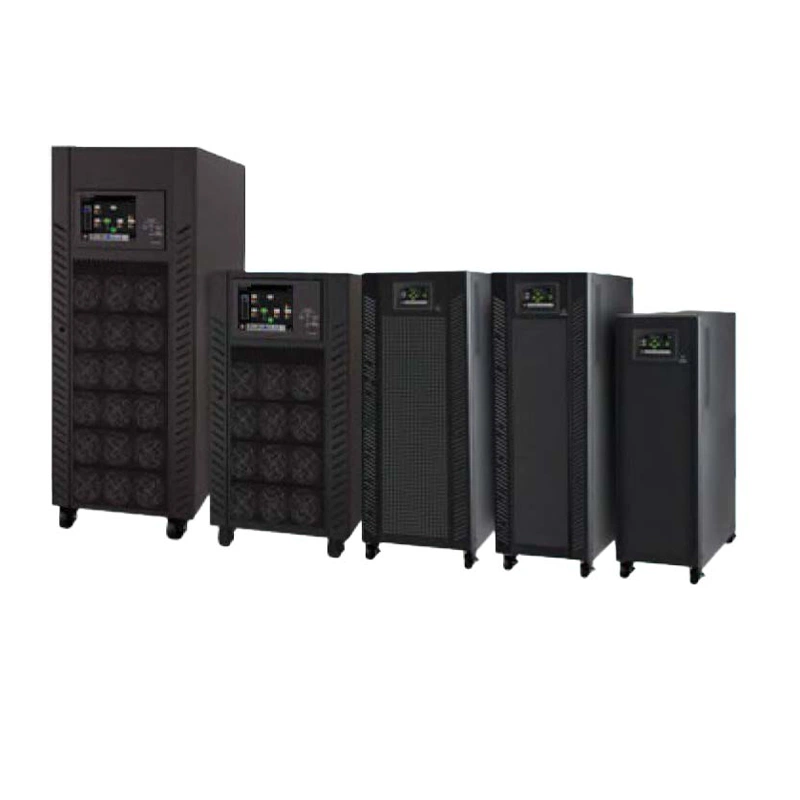В чем разница между ИБП и инвертором?
Release time: 2025-05-14
Uninterruptible power supplies и Inverters have many similar functions. Both can convert direct current (DC) into alternating current (AC) to power equipment. they can adjust the output voltage to reduce the impact of voltage fluctuations on equipment. and they both have protection functions against overvoltage, overcurrent, etc., to avoid damage to equipment. So, with so many similar functions, what are the differences between UPS and inverters? Are their application scenarios the same?
Functional Differences
Conversion Efficiency
- UPS: In order to ensure quick switching and stable power supply when the mains power is interrupted, its conversion efficiency is usually around 80% ~ 95%. Since UPS needs to take into account multiple functions such as battery management, mains power detection, and voltage regulation, the implementation of these functions consumes a certain amount of energy, which affects the conversion efficiency.
- Inverter: An inverter focuses on converting DC to AC, and its conversion efficiency is relatively high, generally reaching 90% ~ 98%. This is because the function of an inverter is relatively simple, and in its design, more emphasis can be placed on improving the conversion efficiency.
Output Stability
- UPS: The stability of the AC output of a UPS is very high. It can precisely regulate and stabilize the output voltage and frequency. Whether the mains power is normal or not, a UPS must ensure that the power quality of the output meets the requirements of the connected equipment to protect them from problems such as voltage fluctuations and unstable frequencies.
- Inverter: The output stability of an inverter is relatively weak. Although it can convert DC power into AC power, its stability in output voltage and frequency is not as good as that of a UPS. Some simple inverters can only provide basic AC output, and the range of voltage and frequency fluctuations is relatively large, making them suitable for occasions with low requirements for power stability.
Emergency Response Speed
- UPS: It has a fast emergency response capability. When a fault occurs in the mains power, a UPS can switch to the battery power supply mode within an extremely short time (usually in milliseconds) and convert the DC power of the battery into AC power for output, ensuring that the load equipment will not stop working due to the interruption of the mains power.
- Inverter: Usually, an inverter does not have a fast emergency response function. It is mainly used to continuously and stably convert DC power into AC power, rather than quickly taking over the power supply for the load in case of a mains power interruption. If it is used for emergency power supply, its response time may be relatively long and unable to meet the needs of power outage-sensitive equipment.
Battery Management Function
- UPS: It has a complete battery management system that can manage the charging and discharging of the battery, monitor the battery status, such as battery capacity, voltage, and temperature, and issue timely alarms when there are abnormalities in the battery. In addition, it can automatically adjust the charging strategy according to the battery condition to extend the battery life.
- Inverter: Generally, an inverter does not have a battery management function. It only converts the input DC power into AC power, and additional equipment is required to manage and maintain the battery. If an inverter is used to power the load with a battery, equipment such as a charging controller needs to be configured separately to manage the battery.
Different Application Scenarios
Uninterruptible power supplies are mainly applied to scenarios with extremely high requirements for the continuity and stability of power supply, such as computer rooms, data centers, medical facilities, industrial automation control workshops, etc. They are used to protect critical equipment from problems such as mains power interruption and voltage fluctuations, ensuring that the equipment can operate continuously and stably and avoiding data loss, equipment damage, and interruption of the production process.
Inverters are more often applied in the field of renewable energy power generation, such as solar power generation systems and wind power generation systems, to convert the DC power generated by power generation equipment into AC power for grid connection or for users. At the same time, they are also commonly used in some mobile devices or off-grid scenarios, such as in vehicles, ships, and field operations, to convert the DC power of the battery into AC power to supply various electrical devices.

